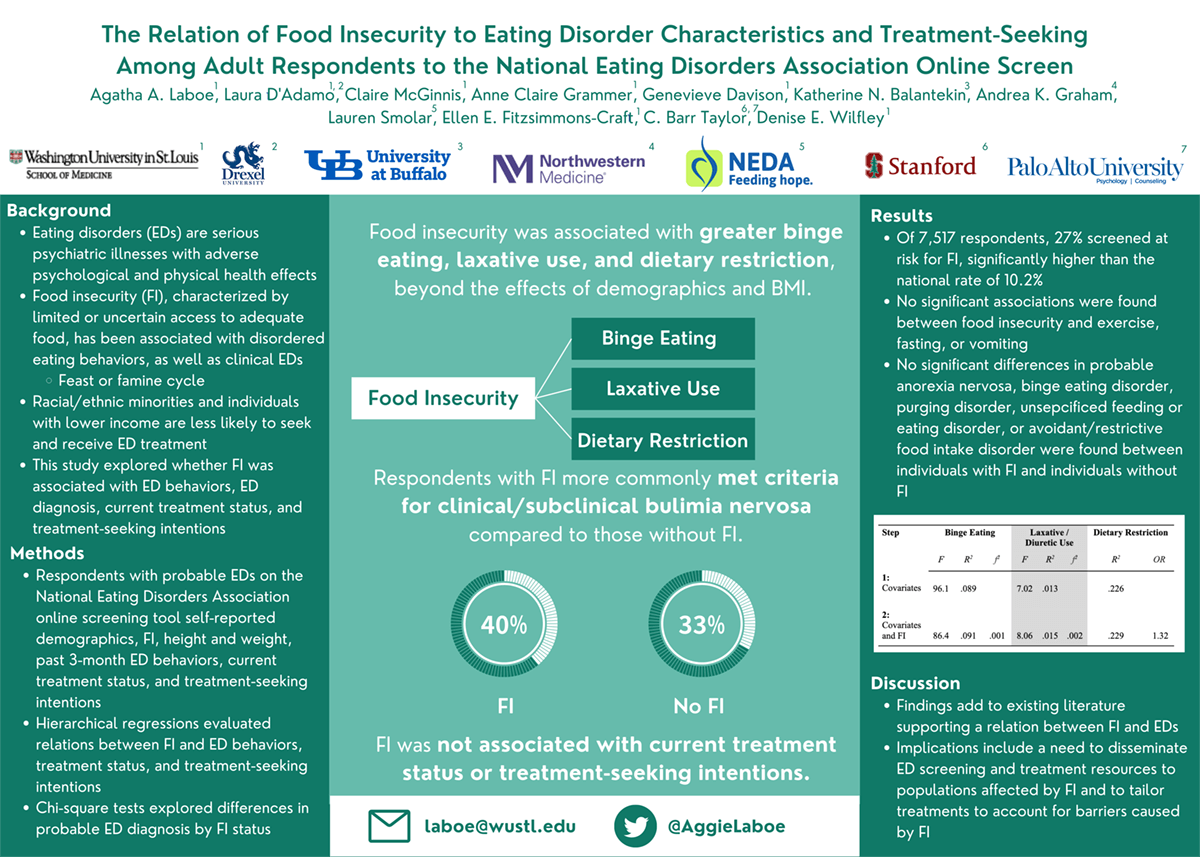
Introduction: Food insecurity (FI), characterized by limited or uncertain access to adequate food, has been associated with eating disorders (EDs). This study explored whether FI was associated with ED behaviors, ED diagnosis, current treatment status, and treatment-seeking intentions among adults who screened positive for probable EDs on an online ED screen.
Methods: Respondents with probable EDs on the National Eating Disorders Association online screening tool self-reported demographics, FI, height and weight, past 3-month ED behaviors, and current treatment status. Respondents were also asked an optional question about treatment-seeking intentions. Hierarchical regressions evaluated relations between FI and ED behaviors, treatment status, and treatment-seeking intentions. Chi-square tests explored differences in probable ED diagnosis by FI status.
Results: Of 7,517 respondents, 27% screened at risk for FI. FI was associated with greater binge eating (R2Change = .001), laxative use (R2 Change = .002), and presence of dietary restriction (R2Change = .001, OR: 1.32) beyond the effects of demographics and BMI (ps < .05). Respondents with FI more commonly met criteria for clinical/subclinical bulimia nervosa compared to those without FI (40% vs. 33%, p < .05). FI was not associated with current treatment status or treatment-seeking intentions.
Impact: Findings add to existing literature supporting a relation between FI and EDs. Implications include a need to disseminate EDs screening and treatment resources to populations affected by FI and to tailor treatments to account for barriers caused by FI.
Organization: Washington University in St. Louis
Laboe AA, D’Adamo L, Grammer AC, McGinnis CG, Davison GM, Balantekin KN, Graham AK, Smolar L, Taylor CB, Wilfley DE, Fitzsimmons-Craft EE